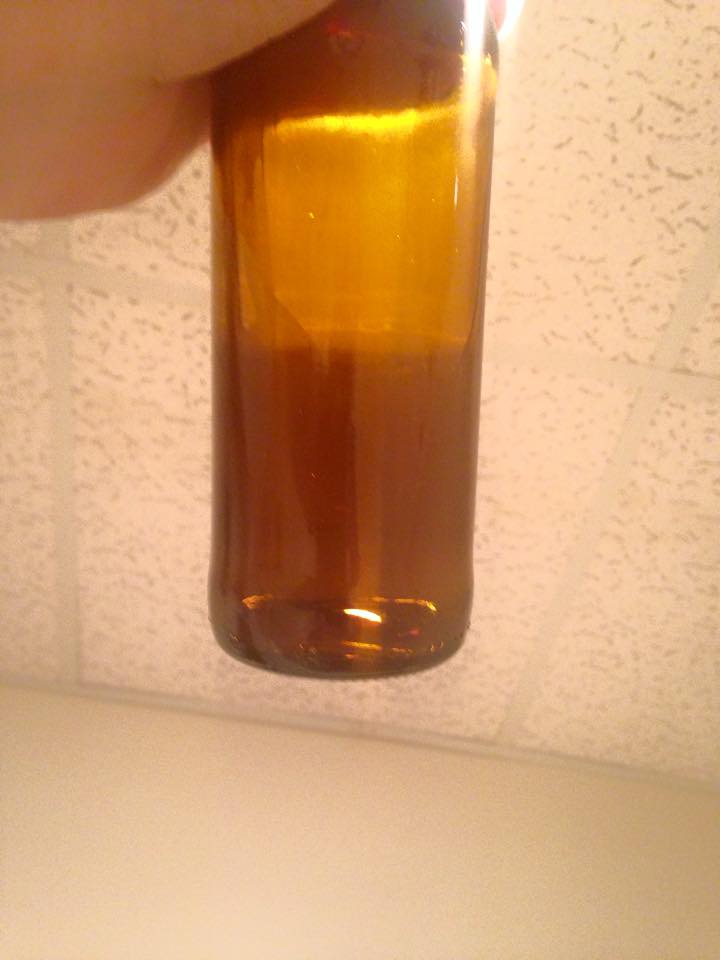Resuming this thread after a while. Here’s my case:
In some batches I noticed that all bottles had to some degree these sediments clinging to the side of the bottle, near the bottleneck.
First I was concerned about some level of contamination, but the beer was fine. Something was off in the flavor, not sure what but certainly is not a big deal, it's good beer after all.
Anyway, some facts on the 5 batches (out of my last 20) that I noticed it:
- All bottles had side sediments in very similar conditions, both in terms of quantity and how it looks. I usually condition my beers in different types of bottles (sizes ranging from 300ml to 1 liter) and in my opinion that rules out something related to the bottle size or format. In other words, there was some consistency across most if not all bottles when it comes to side sediments, all looking the same.
- Sanitization: I use iodophor and results are fine, never had issues. My bottles with clinging sediment were cleaned the same way as the ones that didn’t have it. Note also that my process is fairly consistent, i.e. I run almost exactly the same process when cleaning/sanitizing on all batches.
- Recipe: from my last 20 batches, I got side sediments on five – a porter, a stout with ground coffee addition, a pale ale with dry hopping, a pale ale with ground coffee and a brown ale. I would rule out dry hopping as I had other four dry hopped batches with no side sediment issues. Someone could argue it was the coffee, but that would not explain why I had batches of simpler recipes (brown ale or porter) with exactly the same issue.
- OG/FG: These five batches were all in different ranges in terms of ABV, OG, FG. No luck here too.
- Water: I always use the same water.
- Whirlfloc: again, my process is consistent, I always add the same quantity on all batches.
So, in my quest to find a correlation, what is left is the yeast. Guess what? All batches that presented clung sediments in the side of the bottle were fermented with S-04. The 15 others were on US-05 or some other yeast.
Now the million-dollar question is why S-04? I don’t know, but it is somehow interesting to notice that from 20 batches, the exact 5 ones that developed side sediments were all on S-04.
Does it make any sense?




















![Craft A Brew - Safale BE-256 Yeast - Fermentis - Belgian Ale Dry Yeast - For Belgian & Strong Ales - Ingredients for Home Brewing - Beer Making Supplies - [3 Pack]](https://m.media-amazon.com/images/I/51bcKEwQmWL._SL500_.jpg)





































